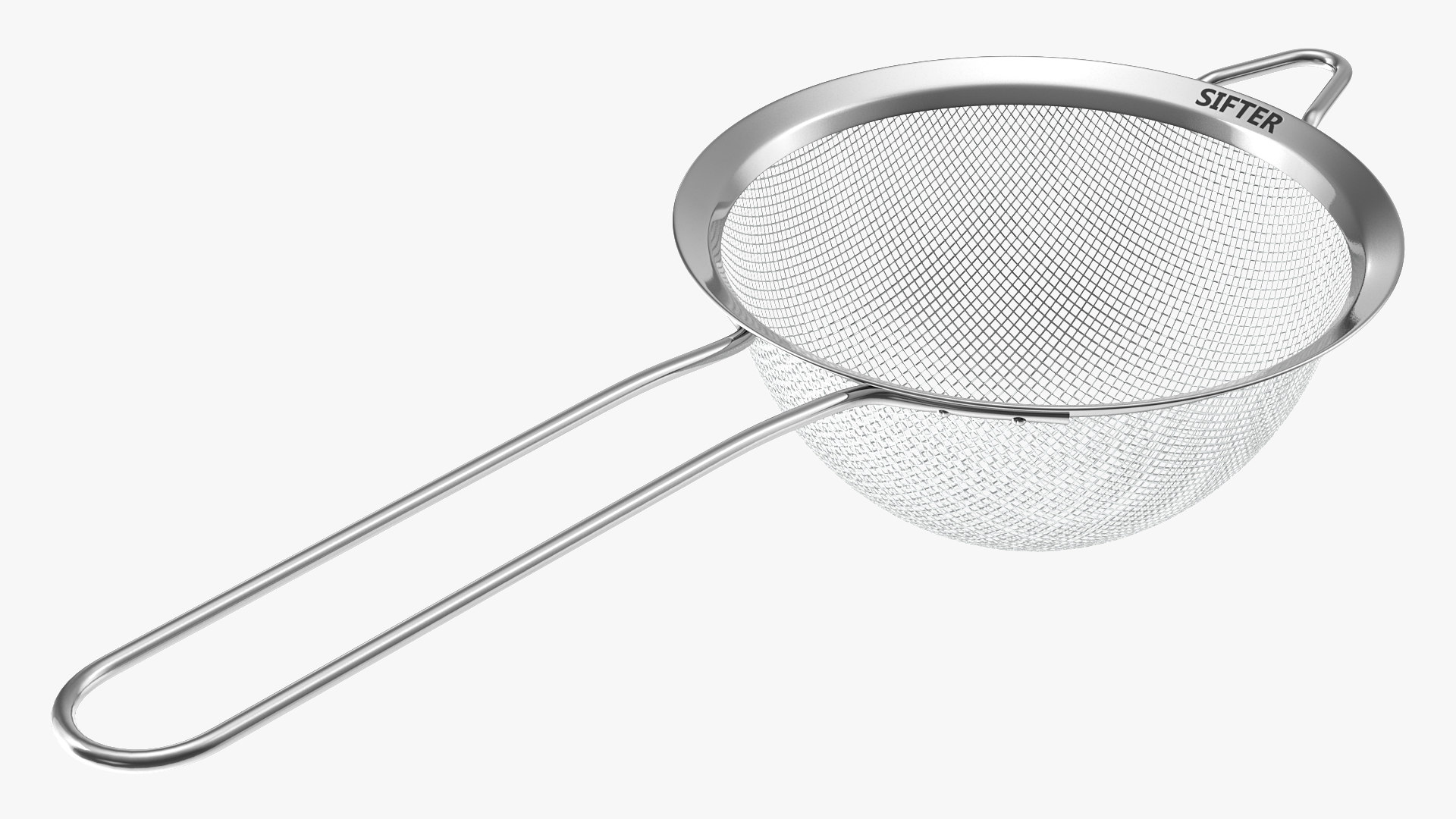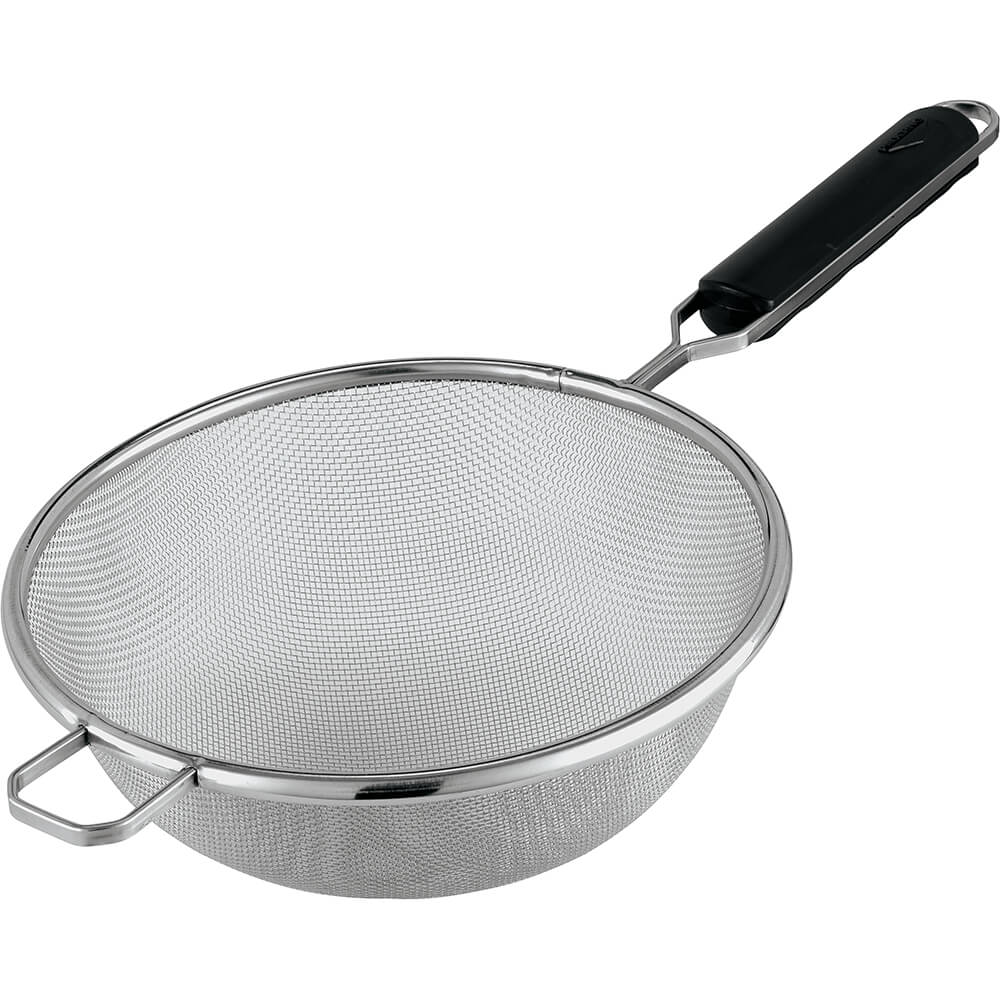Food strainers, indispensable kitchen companions, elevate cooking experiences by effortlessly separating liquids from solids. These versatile tools come in a range of designs and materials, each tailored to specific culinary needs.
From straining sauces to rinsing fruits and vegetables, food strainers streamline kitchen tasks, ensuring efficient meal preparation and impeccable presentation.
Overview of Food Strainers
Food strainers are essential kitchen tools used to separate solids from liquids. They offer several benefits, including:
- Efficiently draining pasta, rice, and other cooked grains.
- Removing excess oil from fried foods.
- Straining sauces and soups to remove lumps and impurities.
- Rinsing and cleaning fruits, vegetables, and herbs.
Types of Food Strainers
There are various types of food strainers available, each designed for specific purposes:
- Colanders:Large, bowl-shaped strainers with holes or slits for draining liquids from larger quantities of food.
- Sieves:Fine-mesh strainers used for sifting flour, straining sauces, and removing small particles.
- Spider Strainers:Wire-mesh strainers with a long handle, ideal for retrieving food from boiling water or hot oil.
- Chinois:Cone-shaped strainers made of fine mesh, used for clarifying soups and sauces.
- Potato Ricers:Specialized strainers that press cooked potatoes through a mesh to create mashed potatoes.
Materials and Design of Food Strainers

The materials used in food strainer construction play a significant role in their durability, functionality, and safety. Common materials include:
- Stainless Steel:Durable, corrosion-resistant, and easy to clean, making it a popular choice for both home and commercial use.
- Plastic:Lightweight, inexpensive, and available in various colors, but may not be as durable as stainless steel.
- Nylon:Heat-resistant, flexible, and suitable for straining hot liquids.
- Silicone:Non-stick, flexible, and heat-resistant, making it ideal for straining delicate foods.
Food strainers come in a variety of designs, each tailored to specific straining tasks:
Size and Shape
- Diameter:The diameter of a strainer determines the amount of food it can hold and the size of items it can strain.
- Depth:A deeper strainer can accommodate more food and is suitable for straining larger items.
- Shape:Strainers come in various shapes, including round, square, and rectangular, to fit different sink sizes and shapes.
Handle Design
- Single Handle:A single handle on the side of the strainer provides a secure grip for pouring.
- Dual Handles:Dual handles on opposite sides of the strainer allow for easier handling and stability.
- Long Handle:A long handle allows for reaching into deep pots or pans for straining.
Applications of Food Strainers
Food strainers are indispensable tools in the kitchen, serving a wide range of culinary purposes. Their primary function is to separate liquids from solids, enabling the preparation of various dishes and beverages.
Separating Liquids from Solids
Food strainers are essential for straining liquids from solids in a variety of culinary applications. They can be used to:
- Separate pasta or rice from boiling water
- Drain excess liquid from cooked vegetables
- Strain sauces and soups to remove lumps and impurities
- Filter tea or coffee grounds
Other Uses of Food Strainers
In addition to separating liquids from solids, food strainers can be used for other purposes, including:
- Rinsing fruits and vegetables:Food strainers can be used to rinse fruits and vegetables under running water, removing dirt and debris.
- Sprinkling powdered ingredients:A fine-mesh strainer can be used to sprinkle powdered ingredients, such as flour or sugar, evenly over dishes.
- Sifting flour:A flour sifter, which is a specialized type of food strainer, is used to aerate flour before baking, removing lumps and impurities.
Cleaning and Maintenance of Food Strainers
Maintaining the cleanliness of food strainers is essential to prevent the growth of bacteria and ensure food safety. Regular cleaning and proper maintenance are crucial to ensure the longevity and effectiveness of your food strainers.
Cleaning Procedure
- Remove Food Debris:After each use, promptly remove any food debris or particles from the strainer using a soft brush or running water.
- Wash with Soap and Water:Use warm, soapy water to thoroughly wash the strainer, ensuring all surfaces are cleaned.
- Rinse Thoroughly:Rinse the strainer thoroughly with clean water to remove any remaining soap or food particles.
- Sanitize (Optional):For added protection, you can sanitize the strainer by soaking it in a solution of 1 tablespoon of bleach per gallon of water for 30 minutes.
- Air Dry:Allow the strainer to air dry completely before storing it to prevent moisture buildup.
Tips for Choosing the Right Food Strainer

Selecting the right food strainer is crucial for efficient and effective food preparation. Consider the following factors to make an informed choice:
Material
Food strainers come in various materials, each with its advantages and disadvantages. Consider the following:
- Stainless Steel:Durable, corrosion-resistant, and easy to clean.
- Plastic:Lightweight, inexpensive, and available in various colors, but less durable than stainless steel.
- Nylon:Heat-resistant and ideal for straining hot liquids, but can be less durable than other materials.
- Silicone:Flexible, heat-resistant, and non-stick, but may not be as durable as other materials.
Size and Capacity
Choose a strainer with a size and capacity that suits your needs. Consider the amount of food you typically strain and the size of your pots and pans.
Mesh Size
The mesh size of a strainer determines the size of particles it can strain. Choose a mesh size that is appropriate for your intended use, such as straining pasta, rice, or vegetables.
Handle and Grip
Ensure the strainer has a comfortable handle and grip that provides a secure hold while straining.
Additional Features
Some food strainers come with additional features, such as:
- Pour spouts:Allow for easy pouring of liquids.
- Legs or feet:Keep the strainer elevated above surfaces.
- Dishwasher-safe:Makes cleaning convenient.
Table: Comparison of Food Strainer Types
| Material | Durability | Heat Resistance | Dishwasher-Safe |
|---|---|---|---|
| Stainless Steel | Excellent | Good | Yes |
| Plastic | Fair | Limited | Yes |
| Nylon | Good | Excellent | No |
| Silicone | Fair | Excellent | Yes |
Innovations in Food Strainer Design

The design of food strainers has seen significant advancements in recent years, leading to improved efficiency and ease of use. These innovations have addressed various challenges and enhanced the overall functionality of food strainers.
One notable innovation is the introduction of strainers with ergonomic handles. These handles are designed to provide a comfortable and secure grip, reducing strain on the user’s hands and wrists. Additionally, some strainers now feature non-slip bases, ensuring stability during use.
Improved Filtration Systems
Advanced filtration systems have also been incorporated into food strainers. These systems utilize finer mesh or perforated materials to capture smaller particles and impurities. This enhanced filtration capability allows for more thorough straining, resulting in cleaner and more refined ingredients.
Multi-Purpose Designs, Food strainer
Versatility has become a key feature in food strainer design. Many strainers now offer multiple functions, such as the ability to strain liquids, rinse fruits and vegetables, or separate solids from liquids. This multi-purpose functionality eliminates the need for multiple kitchen tools, saving space and simplifying meal preparation.
Easy-to-Clean Designs
Recognizing the importance of hygiene, manufacturers have focused on creating food strainers that are easy to clean. Some strainers feature removable parts or dishwasher-safe construction, allowing for effortless maintenance and sanitation.
Food Strainer Accessories
Food strainers often come with a range of accessories to enhance their functionality and ease of use.
Types of Accessories
- Handles:Handles provide a comfortable and secure grip, making it easier to hold and operate the strainer.
- Legs or Feet:Legs or feet elevate the strainer, preventing it from touching the bottom of the sink or pot, allowing for better drainage.
- Pour Spouts:Pour spouts allow for precise pouring of liquids without spilling.
- Strainers with Lids:Lids help prevent spills and keep food from splattering.
- Replacement Mesh Screens:Replacement mesh screens allow you to extend the life of your strainer by replacing the old screen when it becomes worn or damaged.
These accessories enhance the functionality and convenience of food strainers, making them a versatile and essential tool in any kitchen.
Safety Considerations When Using Food Strainers
Food strainers are generally safe to use, but there are potential hazards to be aware of to prevent accidents. These include sharp edges, heat, and slippery surfaces.
Sharp edges can occur on the rim or handles of the strainer, especially if it is made of metal. Be careful when handling the strainer, and avoid touching the sharp edges with bare hands. Use oven mitts or a towel to protect your hands when necessary.
Heat
Food strainers can become hot when used to strain hot liquids or foods. Always use oven mitts or a towel to handle a hot strainer. Allow the strainer to cool before cleaning it.
Slippery Surfaces
Food strainers can become slippery when wet. Be careful when handling a wet strainer, and make sure to have a firm grip on it. If the strainer is too slippery, dry it with a towel before using it.
Questions and Answers
What are the different types of food strainers?
Food strainers come in various types, including mesh strainers, colanders, conical strainers, and chinois.
How do I choose the right food strainer?
Consider the size, shape, material, and mesh size of the strainer based on your specific culinary needs.
How do I clean and maintain a food strainer?
Regular cleaning is crucial to prevent bacteria growth. Hand-wash or use a dishwasher with a mild detergent, ensuring thorough rinsing afterward.
